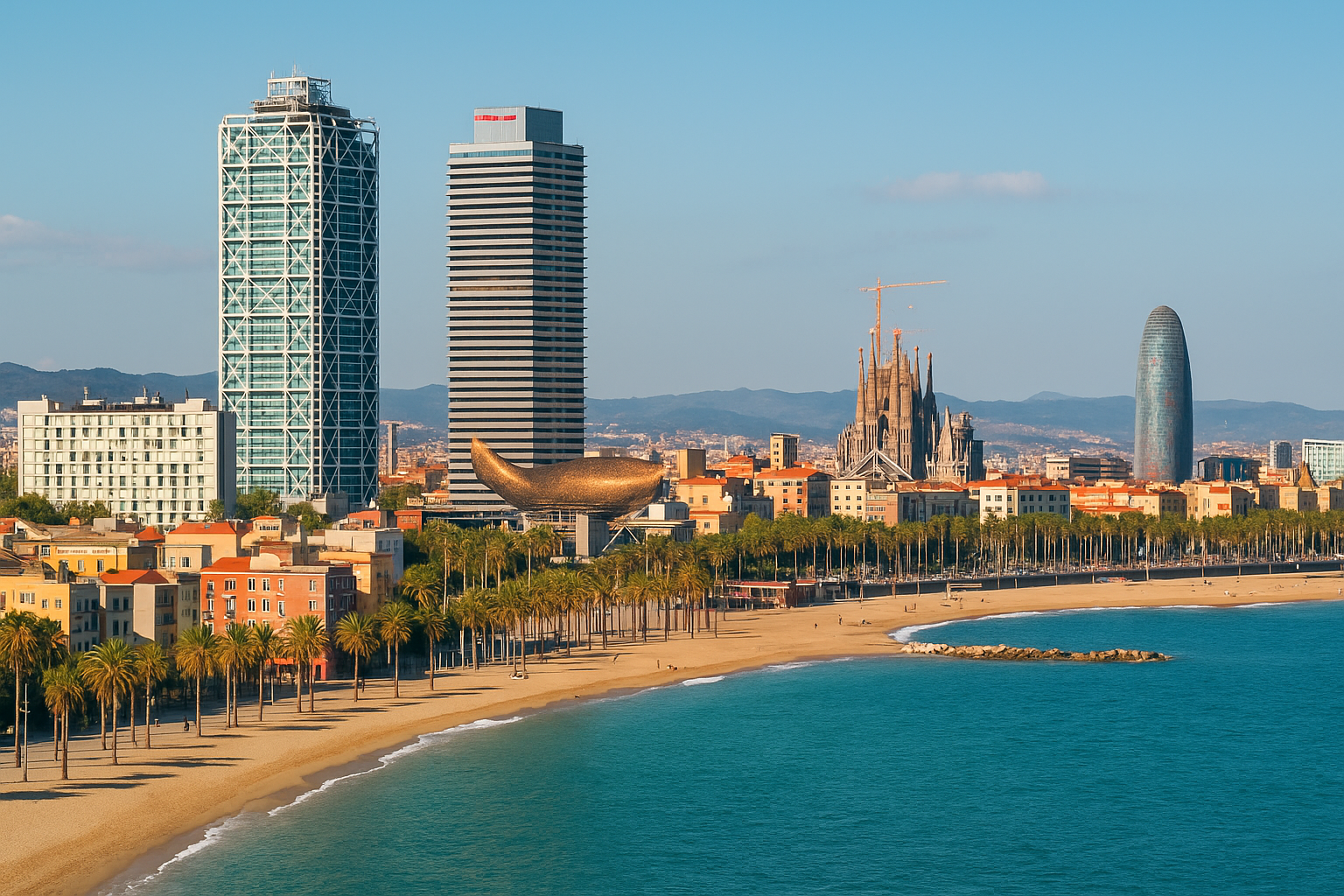Spain Takes Center Stage as Europe’s Summer Travel Hotspot in 2025
Madrid and Barcelona See Unprecedented Flight Bookings as Spain Leads Continental Tourism Boom
Spain is making waves across the European travel landscape this summer, emerging as the continent’s top destination according to the newly released Travel Insights 2025: Focus on Europe report by Amadeus and the UN Tourism Agency. With a commanding share of flight bookings and a booming hospitality sector, the country is experiencing a tourism renaissance led by its iconic cities—Madrid and Barcelona.
Both cities have surged in popularity this year, capturing the attention of global travelers seeking the perfect blend of urban culture, historic charm, and vibrant summer energy.
Madrid and Barcelona Dominate European Flight Searches
The Spanish capital, Madrid, has achieved a major milestone, ranking as the second most-booked European city for summer 2025 travel, trailing only Istanbul and surpassing tourism powerhouses like Rome and Paris. Interest in Madrid has climbed 17% year-on-year, driven by its unique mix of historical landmarks, celebrated art museums such as the Prado and Reina Sofía, and its famously energetic tapas culture.
Barcelona follows closely, landing the fourth spot in Europe for flight bookings and ranking high among the continent’s most searched travel destinations. The Catalonian capital’s allure lies in its stunning Gaudí architecture, Mediterranean beaches, buzzing nightlife, and cosmopolitan vibe. With events like the Primavera Sound Festival and regular summer beach parties at Barceloneta, the city continues to attract both returning visitors and first-time adventurers.
Spain’s Coastal and Island Getaways See Soaring Demand
While Madrid and Barcelona dominate the booking charts, Spain’s coastal destinations are experiencing a parallel boom. Palma de Mallorca, the sun-kissed Balearic Island capital, and Málaga, nestled on the Costa del Sol, are drawing increasing numbers of beach-loving tourists. Both cities have risen significantly in online searches, supported by enhanced flight connectivity and luxury hotel developments.
The Canary Islands, especially Tenerife and Gran Canaria, have emerged as year-round paradises for Europeans looking to escape unpredictable weather at home. In particular, Santa Cruz de Tenerife is seeing a sharp uptick in bookings, thanks to its dramatic landscapes, volcanic beaches, and diverse outdoor activities.
Less-heralded locales like Alicante and Las Palmas de Gran Canaria are also stepping into the limelight. These cities, once seen as budget-friendly alternatives, are now gaining attention from mainstream travelers eager for relaxed, authentic Spanish experiences without the crowds of Barcelona or Seville.
A Tourism Surge Backed by Strong Air Travel and Hotel Growth
The numbers behind Spain’s tourism boom are telling. According to the Amadeus report, Spain holds a commanding 12% share of all airline seats in Southern and Mediterranean Europe, outpacing regional peers like Italy and Greece. Forecasts suggest that air passenger traffic to Europe is set to increase by nearly 7% between April and October 2025, with Spain likely to outperform the continental average.
Hotel data reflects the same optimism. The average daily rate (ADR) for hotel rooms in major Spanish cities has soared above €176, with occupancy rates reaching pre-pandemic levels. From boutique hotels in Madrid’s Malasaña district to beach resorts in Marbella and Ibiza, travelers are clearly willing to pay a premium for quality experiences in Spain.
Airlines Expand Routes to Meet Surging Demand
Airlines have taken note of Spain’s rising travel allure. Many have added new seasonal and year-round flights to Madrid, Barcelona, and regional airports including Málaga, Valencia, and Palma. Carriers such as Iberia, Vueling, and Ryanair are capitalizing on the upswing by launching more frequent connections from key international gateways across Europe, North America, and Latin America.
In response to the strong summer outlook, industry experts anticipate peak travel periods to intensify in July and August, prompting airlines to expand capacity ahead of demand. Javier Campo, European Hospitality Director at Amadeus, emphasized the significance of this trend: “We’re seeing a well-organized return to pre-COVID travel rhythms. The industry is preparing not only for recovery but for record-breaking summers.”
Spain’s Broad Appeal Makes It a Universal Favorite
What sets Spain apart in 2025 is its ability to cater to every type of traveler. From solo explorers walking the Camino de Santiago to couples savoring Michelin-starred cuisine in San Sebastián, and families enjoying theme parks in Tarragona or coastal adventures in Costa Brava—Spain’s diversity is a massive draw.
Moreover, the country’s commitment to cultural preservation and tourism sustainability is attracting a more conscious traveler. Heritage-rich towns like Córdoba and Salamanca are leveraging UNESCO World Heritage status to offer deeper, more meaningful tourism experiences.
Planning Ahead Is Key for Summer 2025 in Spain
With demand already surging, tourism officials and industry leaders are encouraging travelers to book early. The government-backed Spain Tourism Board has launched new marketing campaigns across Europe and the Americas to highlight both iconic cities and lesser-known regions, ensuring a more even tourism spread.
As Spain cements its position at the top of Europe’s summer travel rankings, one thing is clear: the nation is not just recovering—it is thriving. From Madrid’s artistic energy to Barcelona’s seaside magic and the sun-drenched serenity of the Balearic and Canary Islands, Spain in summer 2025 offers something truly unforgettable.
For more travel news like this, keep reading Global Travel Wire


















